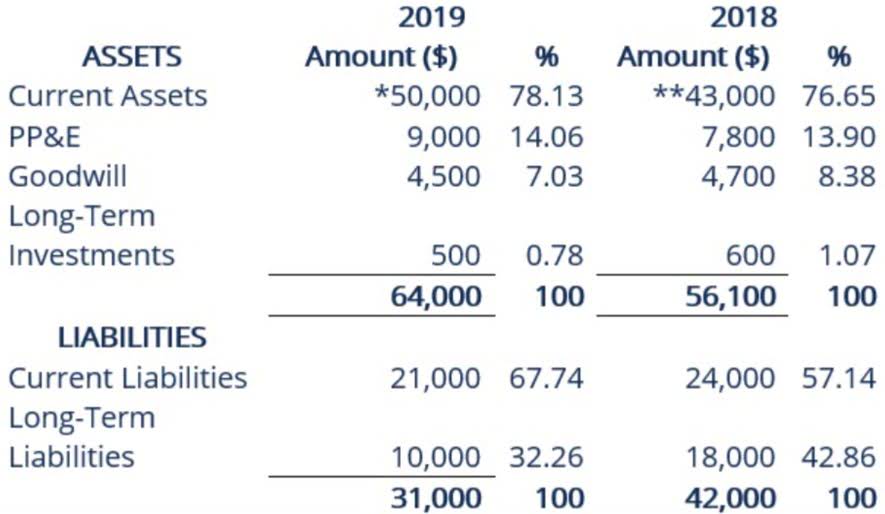
Still, despite its shortcomings, I think the percent of sales method is a useful method worth understanding and being able to apply. I’ll walk you through what this financial forecasting tool is, how to use it, and some of its benefits and shortcomings. If your sales increase by 20 percent, you can expect your total sales value in the upcoming quarter or year to be $90,000. On the other hand, with the alteration in sales, fixed assets do not alter.
Balance sheet items
A marketing manager might argue that it fails to account for the impact of marketing campaigns and consumer behavior changes. Meanwhile, an operations manager could point out that it doesn’t reflect changes in production costs or efficiency. For example, a retailer in the 1950s might have used simple linear regression to forecast sales based on the previous year’s data.
- However, even the most robust predictive models are subject to the whims of reality, where actual outcomes may deviate from forecasts.
- This gives you an oversimplified example of how to calculate the sales percentage for a single product.
- This helps them plan inventory purchases and assess whether they need a loan to cover increased costs.
- The expenses include administrative expense, cost of goods sold expense, depreciation expenses, marketing expenses and other expenses.
- Say for example that Jim believes he can increase company revenue (sales) to $400,000 next year.
- The percentage of sales method refers to a financial forecasting model that enables a business to predict financial alterations based on spending accounts and past and current sales.
- As someone who has worked in finance and accounting for years, I know how crucial forecasting is for businesses.
Zero-Coupon Bonds Demystified: Investing for Future Gains
In this method, working capital is determined on the basis of past experience. If, over the years, the relationship between sales and working capital is found to be stable, then this relationship may be taken as a base for determining the working capital for future. This entry reflects the company’s expectation that $20,000 of its accounts receivable is unlikely to be collected. So, Electronics Inc. would record a bad debt expense of $20,000 on its income statement for the year. Let’s say we have a company named Electronics Inc. that sells its products on credit. Based on its past experiences and knowledge of its customers, the company estimates that 2% of its retained earnings credit sales will not be collectible.

I Took a Deep Dive Into Trend Forecasting: Here’s What I Learned + Expert Tips
In the dynamic dance of commerce, the harmonious interplay between marketing and sales departments… While the competitive parity method provides a benchmark for budget allocation, it may not necessarily be aligned with your business goals. The idea behind this approach is to ensure that you are not at a disadvantage compared to your industry peers. If your competitors are investing heavily in advertising, it may be necessary for you to allocate a similar budget to stay competitive. For example, if you anticipate $100,000 in sales and decide to allocate 10% towards advertising, your budget would be $10,000.
How Kevin Passed the CPA Exams in 6 Months
- While it offers a good starting point, it’s essential to use this method alongside other forecasting techniques.
- Adopting smart strategies can improve your sales performance and boost your revenue.
- I’ll now zoom in on one detailed case study and go through this whole process in detail.
- Multiplying the forecasted accounts receivable with the historical collection patterns will predict how much is expected to be collected in that time period.
- For each age category, the firm multiplies the accounts receivable by the percentage estimated as uncollectible to find the estimated amount uncollectible.
First, Jim needs to work out the percentage that each of these line items represents relative to company revenue. Time for the electronic store’s owner to Accounting for Technology Companies sit down with a cup of coffee and look at the relevant sales data. The business owner also needs to know how much they expect sales to increase to get the calculations going. It also can’t consider other financial changes like future bad debts that might impact sales. But even for bigger companies, the percentage-of-sales method may not work as well if they’ve had a big change in operations or structure that’s taken place to drive more sales.


This method is seen as more reliable because it breaks down the probability of BDE by the length of time past-due. There is a percentage of sales method lower chance that recent purchases won’t be settled by the credit card companies than purchases over a month out. Credit sales carry a great deal of risk despite their convenience, including processing fees. Bad credit expense refers to purchases that go uncollected due to credit card complications on the customer end. The company then uses the results of this method to make adjustments for the future based on their financial outlook.
- In percentage of sales method, the balance in the allowance for doubtful debts is ignored.
- Calculate the bad debts expense to be recognized at the end of the period and the new balance of the allowance for doubtful debts account.
- The Percentage of Sales method allows businesses to forecast sales based on the historical sales performance.
- One of the simplest yet most effective techniques I’ve used is the Percent of Sales Method.
- Checking up to see how the actual figure is progressing against the predicted one helps to manage accounts receivable accordingly and tighten collection processes for businesses.
- This method is simple, easy to understand and useful for projecting relatively short-term changes in working capital.
- The best part of this method is it doesn’t need loads of data to work, just the prior sales and a calculator (or software, if you want to make life easier).
While some sales forecasts are so complicated and detailed that they make your head spin, this is a simple sales forecast that even the least numbers-oriented small business owners like me can use. Larger companies allow for a certain percentage of bad credit in their financial analysis, but many small businesses don’t, and it can lead to unrealistic projections and unforeseen loss. Liz’s final step is to use the percentages she calculated in step 3 to look at the balance forecasts under an assumption of $66,000 in sales.

Unit 10: Receivables
For each age category, the firm multiplies the accounts receivable by the percentage estimated as uncollectible to find the estimated amount uncollectible. In applying the percentage-of-sales method, companies annually review the percentage of uncollectible accounts that resulted from the previous year’s sales. However, if the situation has changed significantly, the company increases or decreases the percentage rate to reflect the changed condition. For example, in periods of recession and high unemployment, a firm may increase the percentage rate to reflect the customers’ decreased ability to pay. However, if the company adopts a more stringent credit policy, it may have to decrease the percentage rate because the company would expect fewer uncollectible accounts. Reviewing historical data of uncollectible accounts and the industry benchmark for bad debt expenses can work out the percentage needed for the forecast.
